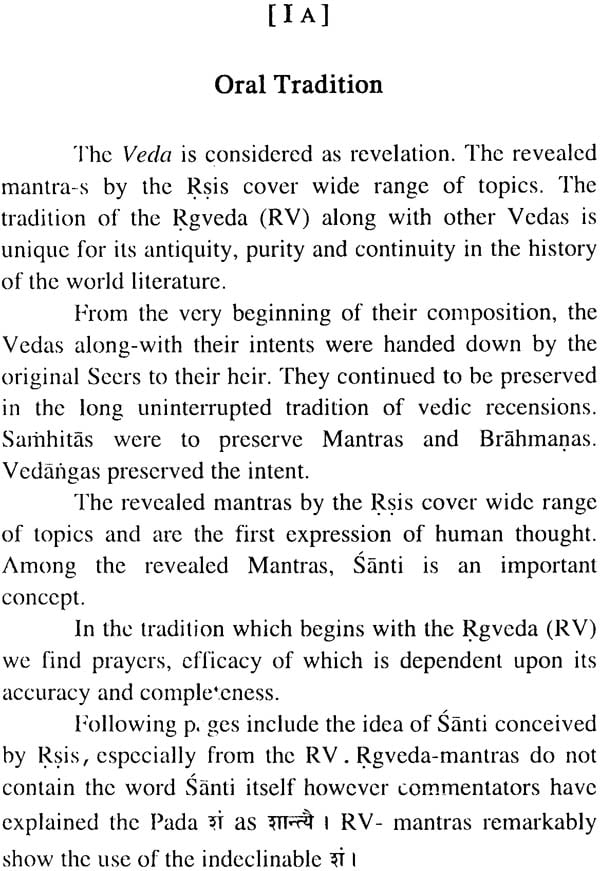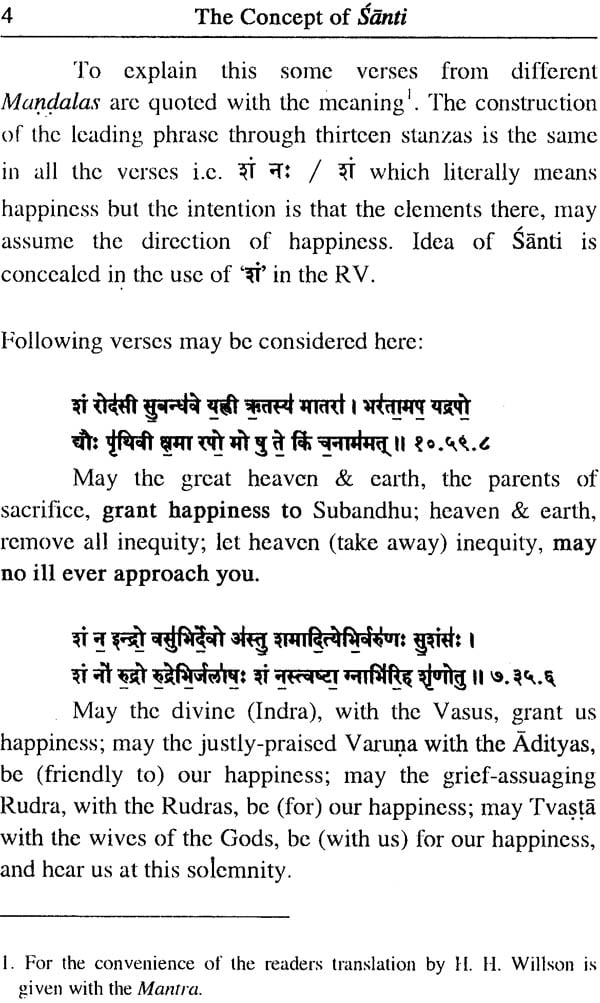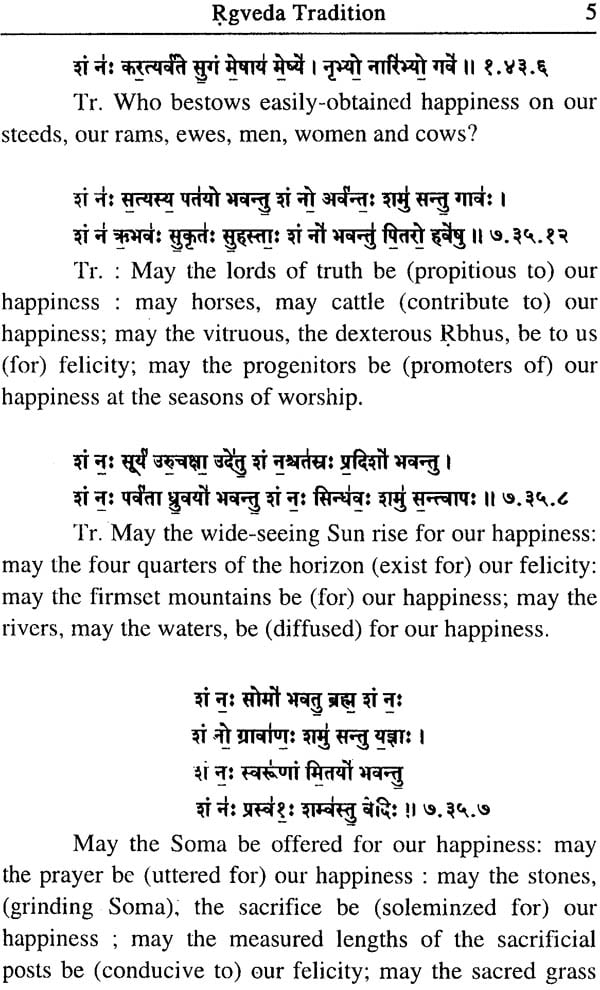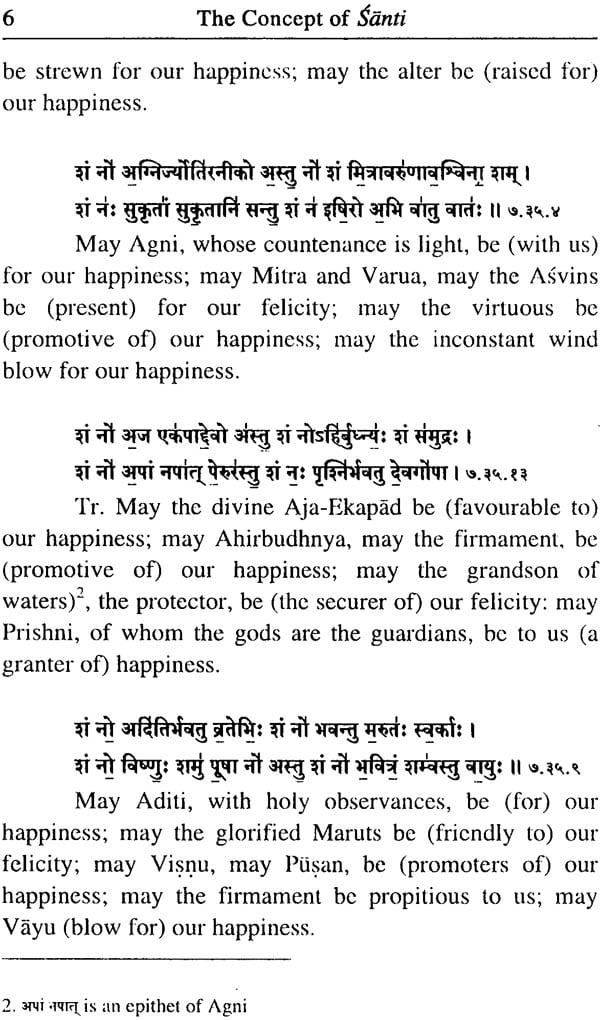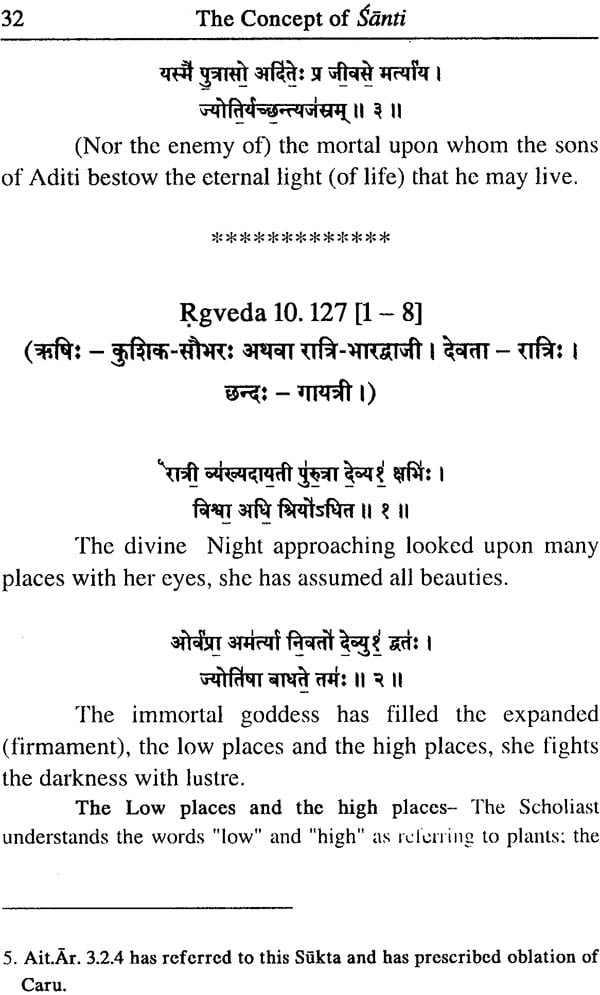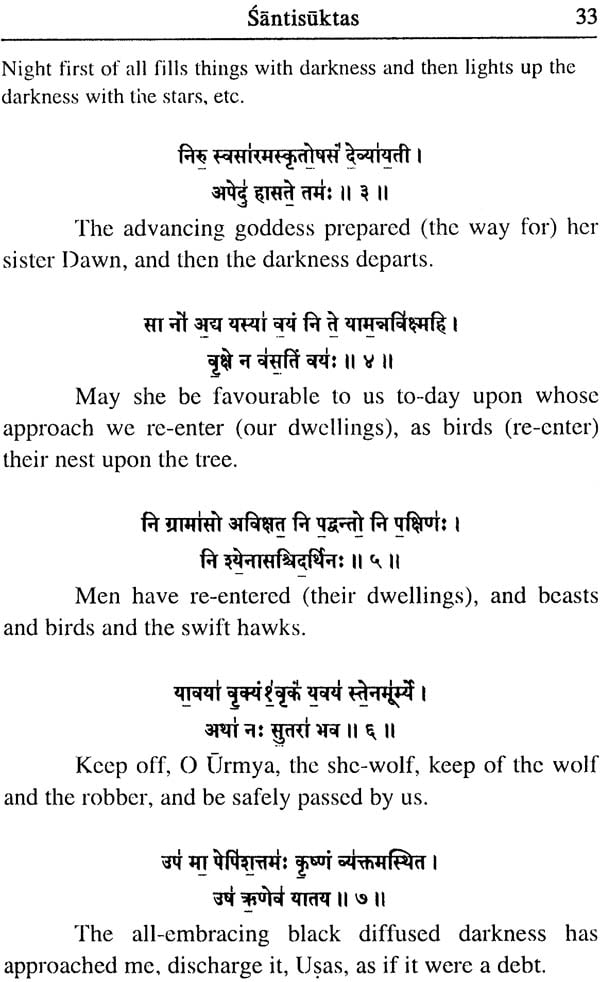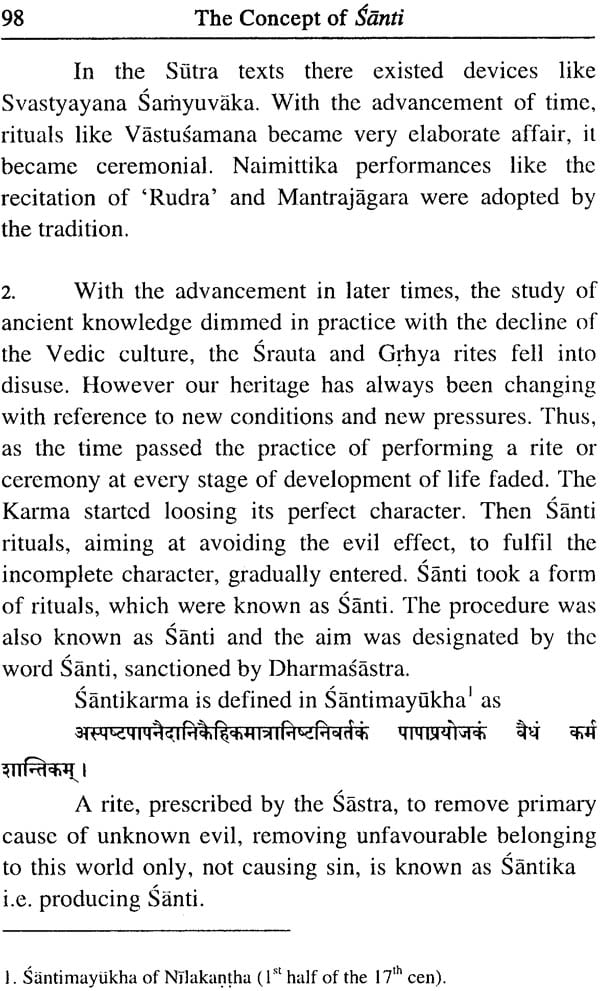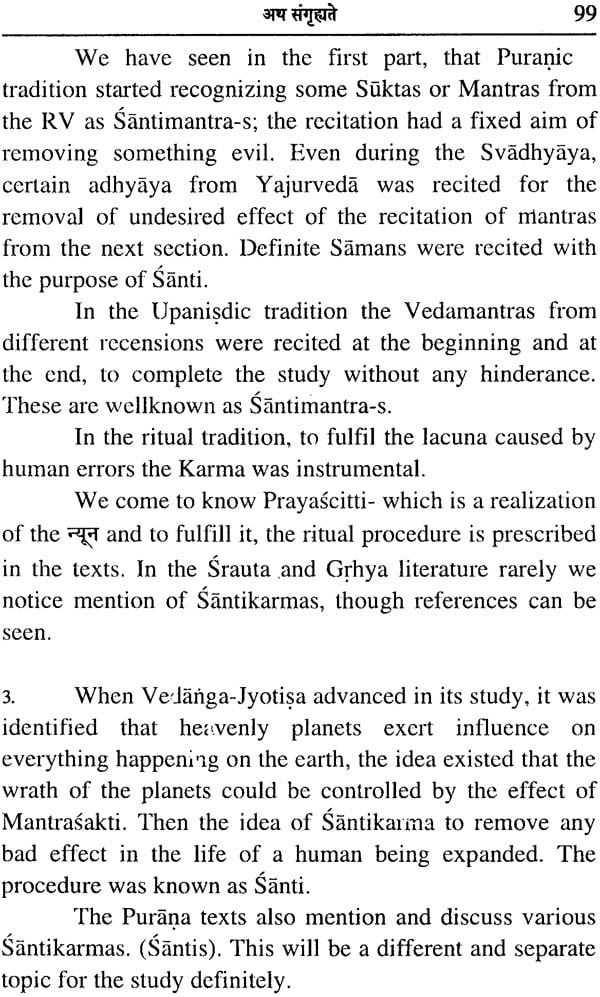
The Concept of Santi (In The Vedic Tradition)
Book Specification
| Item Code: | NAJ959 |
| Author: | Dr. Bhagyashree Bhagwat |
| Publisher: | Vaidika Samshodhana Mandala, Pune |
| Language: | Sanskrit Text with English Translation |
| Edition: | 2012 |
| Pages: | 124 |
| Cover: | Hardcover |
| Other Details | 8.5 inch x 5.5 inch |
| Weight | 230 gm |
Book Description
1. In quest of santi
The philosophers, religious leaders, thinkers, social reformers, politicians, even international beurocrats are seen talking about and also working for "santi' - Peace. This motivated me to think more deeply about this concept siinti which in fact seems to be very much desideratum.
2. Is no-fear, no-war etc equal to the state of santi?
Some four years ago Vaidika Samshodhana Mandala has arranged a lecture series (of 10 lectures) about '.santi: Concept and Ritual'. We invited scholars and followers of different faiths to present their deliberations about the theme. After listening to all these lectures I got the impression that at least today the followers of these faiths 'do not want santi' but all what they are talking about is 'avoidance of asanti', People want santi means they do not want split, they do not want malice, they do not want war, fear, anxiety etc. The question almost disturbed my piece of mind is, 'Is the state of no-fear, no-war, no-split, no- malice etc equal to Santi?
3. Concept of santi in Vedic literature
My quest for santi rather concept of santi motivated me to review the ancient literature from this view point. I would like to submit in brief my conjectures in this regard.
Introduction
Indian tradition defines Veda as Vedas being the foremost record of human history, the beliefs reflected in' the Vedic culture possess special importance.
Concept of Santi is one of the important facets of this culture, which implies avertion of the effect of evil, or the improper action etc.
In the oral and ritual tradition of the Veda, certain part of a Sukta or the complete Sukta or a part of a Mantra is treated as Santimantra / Santyadhyaya/ Santisukta.
An attempt has been made in this monograph to give such parts of the Rgveda Samhita (with meaning and notes) in one place and further an effort has been made to find out why such concept existed, what was the reason to treat some portion as Santisukta / Santyadhyaya.
We do not find any straight reference, but the scattered references make the concept clear. Such references are also included here, wherever possible.
Alongwith the Rgveda Suktas (pp. 1-35), Santimantra of Upanisads and their relation with a particular recension is included in a separate part. We have such Santi-mantras related to each of the four Vedas. RV YV and SV having liturgical character, the references related to them are mentioned here.
First part IA and IB give general idea and Santisuktas from the RV with the meaning and notes by Wilson. IC and ID include the YV references and Santimantras and Upanisads, Part IE deals with two important prevalent customs Rudra and Mantrajagara in Oral tradition, especially current in Maharashtra.
The second part discusses concepts like Samyuvaka, Svastyayana, Santatiya and tries to present important notable meaning of the root.
In spite of all these facts Yv has mentioned one imp mantra. Nowhere we find that this portion is applied as a Santimantra.
Part IIc discusses this concept of Santi and ries to explain it.
Last part summarises and concludes the monograph considering the idea from Mantra and Brahmana portions of the Veda and also suggests that this concept can be studied further with the help of some other post vedic texts.
Contents
| | Foreword | |
| | Acknowledgement | |
| | Abbreviations | |
| | Part I | |
| 1. | Introduction | 1-2 |
| 2. | I A., I.B. Rgveda mantras and Santisuktas | 3- 35 |
| 3. | I C. Santyadhyaya from yv | 36- 39 |
| 4. | I D. Santimantra-s in Upanisadic tradition | 40-50 |
| 5. | I E. Prevalent Customs | 51-58 |
| | Part II | |
| 6. | II A. Prayascitti and Prayascitta | 59- 67 |
| 7. | II B. Samyuvaka, Santatiya and Svastyayana | 68- 86 |
| 8. | II C. vaisvika Santi in the yv | 87- 94 |
| 9. | II D. अथ संग्रह्य ते | 95-102 |
| 10. | Bibliography | 103-104 |
